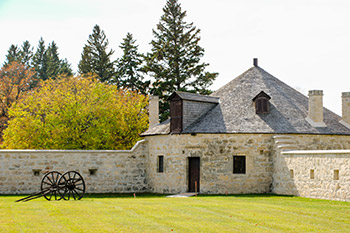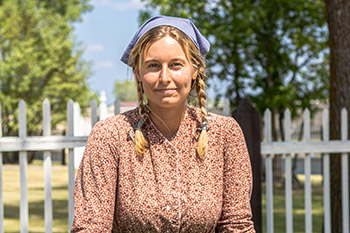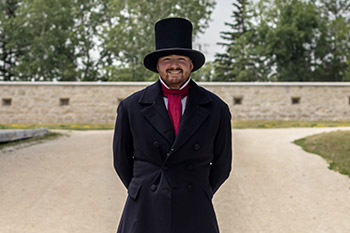Historic information
Lower Fort Garry National Historic Site
Come play with history

Your journey of discovery actually begins in downtown Winnipeg, at The Forks, where the original Fort Garry once stood. The unforgiving flood of 1826 destroyed Fort Garry, depriving the Hudson's Bay Company of a vital centre for trade. In 1830, construction began on a new fort 32 km (20 miles) downriver, one that would stand on higher ground and be situated north of the gruelling St. Andrews rapids. Lower Fort Garry's main buildings were completed by the early 1840s, using limestone and wood from the surrounding area. Today, these buildings stand as one of the finest collections of early stone buildings in Western Canada.
For three decades, Lower Fort Garry's thriving agricultural and industrial production provided many of the materials needed to fuel the fur trade in the HBC's Northern Department. Food, livestock, York boats, and labour were supplied by Lower Fort Garry. The fort also served as an essential supply and distribution centre for fur and trade goods.
On August 3, 1871, at “The Stone Fort”, a treaty was made between chiefs and representatives of the Ojibway and Swampy Cree nations in southern Manitoba and the Crown. Treaty No. 1 was the first of 11 numbered treaties that set the stage for the settlement of Western and Northern Canada.
In later years, the Fort served as one of the first training grounds for the North-West Mounted Police prior to their march west, a provincial penitentiary, and a mental health facility. The HBC ceased operations at the Fort in 1911, and the Manitoba Motor Country Club leased it from 1913 to 1963. Lower Fort Garry became a national historic site in 1951 and its buildings were restored throughout the 1960s and early 1970s.


Experience life in the year 1851
What would have been going on at LFG if you had visited in the year 1851? Who would have been there? What would you have seen? Would the fort look just the same as today?
Come and meet the people who lived in this fascinating time! It was an era when the Hudson's Bay Company operated a string of fur trade forts throughout the area they called Rupert's Land – the same territory the Indigenous peoples of Western Canada called home. You will meet costumed guides throughout the site representing the people who lived here in the early 1850s.
You can help Parks Canada take care of Lower Fort Garry by not bringing any food or drinks (other than water) on the historic grounds. Please do not litter.
We hope you enjoy your visit. Please bring your family and friends back this summer and teach them all the fascinating things you learned.
- Date modified :